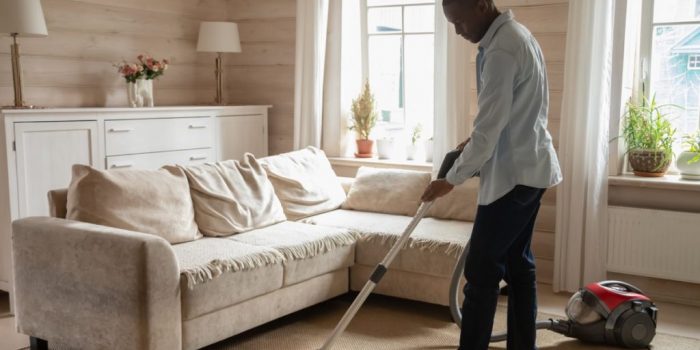Cleaning houses is easy. You dust and then you organize. It’s a two-step approach to a problem that exists everywhere inside the house.
But if you’re a house owner and you’ve never really taken the time to observe the works of maids from Maggy Maid, then there’s a chance you may not be doing things right. That’s why it’s always a better option to hire from these professional cleaning services. But if you insist on cleaning, here are some common cleaning mistakes you should avoid.
1. Organizing, then dusting, then re-organizing.
Cleaning should only be a two-step process, in general, at least. If you have a heap of clothes on the floor and fold them up, then put them in the closet, this is the absolute worst way to do it. Your goal is to clean up with the least amount of steps possible. The right way to do it would be to put them in the laundry machine first. This way, you’re not reintroducing dirt into spaces.
2. Not using a top-down approach.
There’s an advantage of cleaning things starting from the top of shelves, or wiping down windows from the top to the sills: you’re causing the least amount of air disturbance for dust not to circulate. Imagining wiping the kitchen table and then dusting the top of your food cabinets – it defeats the purpose.
Although in scenarios where this is unavoidable, use a piece of wet cloth instead of a feather duster. A wet cloth catches dust more effectively, eliminating the need to re-wipe surfaces.
3. Cleaning windows when it’s not raining.
It’s nice to clean out a room when it’s a sunny day but at the same time, you’re missing an opportunity to clean more with the least amount of effort. It’s actually better to wait for a light shower or a thunderstorm before cleaning a window because you only have to clean the interior side.
That’s not the only reason why you should avoid cleaning during sunny days. Glass panes dry too quickly, and washing them with soap and water will leave streaks instead of making them squeaky clean. You can also clean windows early in the morning instead.
4. Using the incorrect solution for your kitchen countertops.
Kitchen countertops get daily abuse from knives, food, dirt, oil, and a lot of other stuff that could damage it. What’s worse is that some homeowners damage it when they clean these countertops with the incorrect solution. Depending on the material of your kitchen countertop, your bleach solution might not be the best.
For marble countertops, avoid using acidic solutions. The acid component will react with the marble and will gradually eat its way, making it more vulnerable to cracks and scratches.
The opposite works for wooden countertops. Using acidic solutions will permeate the porous wood surface, killing bacteria lodged in tiny spaces. Vinegar also helps protect wood by repelling most insects and termites.
For kitchen countertops with a plastic lamination, any type of cleaning solution is acceptable. Using a standard bleach solution will kill all bacteria, and plastics are resistant to most corrosive substances.
5. Reusing rags.
Just like how you wouldn’t want feather dusters to redistribute dirt and dust, you don’t want to spread bacteria and dirt on new surfaces. It’s recommended to wipe down surfaces with clean paper towels every time, although microfiber cloths also work. Just make sure to wash rags with soap and water before attacking other surfaces.
You also want to wipe surfaces from cleanest to dirtiest. It’s the same concept in the medical community in wound treatments – you do not want to reintroduce bacteria or dirt into cleaner surfaces.
This also means using a different rag for a different part of the house. Surely you don’t want to be wiping your tables with a rag that’s been used to clean your stove countertops as the latter has more oil, and if you happen to have a wooden countertop, the oil is going to stick to the surface.
6. Not cleaning the fridge.
One of the cleanest places in the kitchen should always be the refrigerator. If you keep finding rotten vegetables in your refrigerator, that means there’s a lot of bacteria inside. Dispose old food from the fridge and defrost the freezer, then wipe the insides with a solution of soap and water. This keeps food items fresher for longer.
7. Mixing cleaning solutions.
For your safety and everyone else inside your house, do not mix cleaning chemicals. These chemicals are already volatile and mixing them together may create more intense, corrosive solutions that produce fumes that can cause lung irritation.
While some claim that mixing solutions makes it more fragrant, the smells mask the gases that can be causes of chemical burns. Avoid mixing bleach with ammonia, or mixing organic and non-organic cleaning solutions. The latter may still be acceptable, but the organic compounds that help it clean may be neutralised, rendering it useless.
8. Forgetting to air the inside of your house.
One of the best ways to finish cleaning your house is to open all the windows and doors. Cleaning inside a closed space is basically recirculating foul air and you don’t want bacteria and dust to settle afterwards. Opening windows also make sure vapors from cleaning solutions are replaced with cleaner air.
These are some of the most common cleaning mistakes you should avoid. For a cleaner house, it’s more efficient to hire professional cleaning services as they know all the ins and outs of cleaning.


